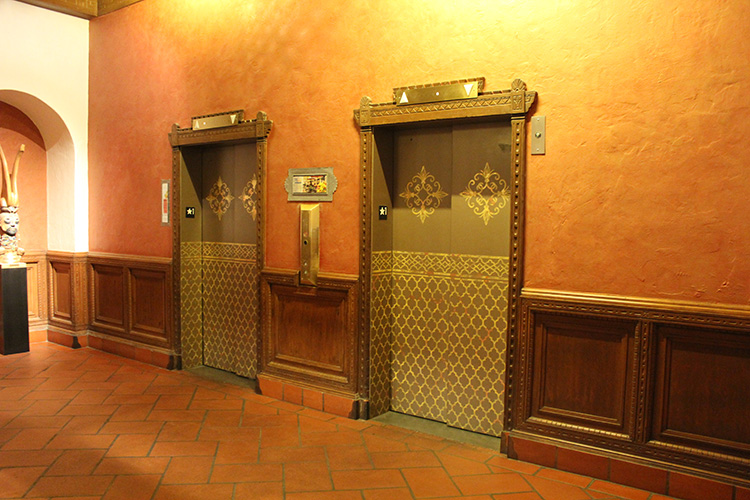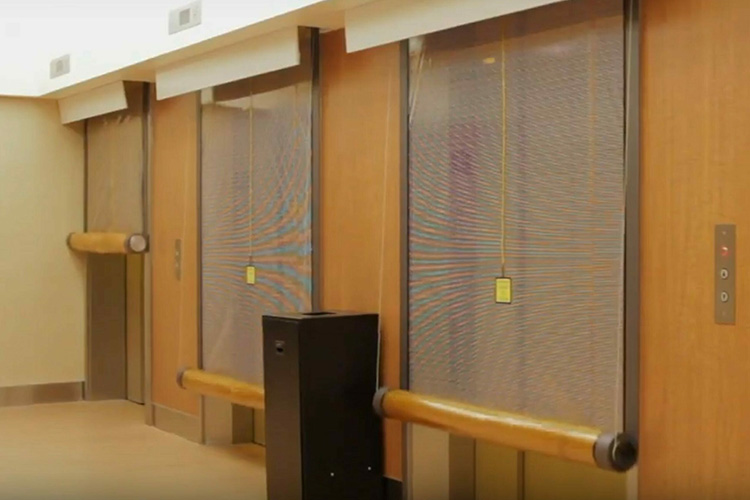5 Elements of Modern Elevator Lobby Design
April 9, 2021
As someone enters your building, one of the very first stops they make is often at the elevators. Elevator lobbies are integral to most larger and high-rise buildings and they become a gathering place of sorts for visitors and employees. For that reason, your elevators and your elevator lobby design need to meet certain criteria for comfort, safety and aesthetics.
There are many ways to design an elevator lobby, just as there are many types of buildings and interior design styles. While the overarching style and color scheme of your lobby will likely be dictated by your building or your brand, there are a few factors that can universally improve your elevators and lobby.
Paying attention to the following five factors in your elevator lobby can help ensure that your visitors and employees can access the elevator(s) in a safe and stylish environment.
1. Lighting
Lighting is crucial to every good design, and when you have spaces that see a lot of people coming and going at once — as well as small, enclosed spaces like elevator cabs — lighting becomes even more important. Good lighting in the lobby outside the elevators helps make the space feel more open and welcoming. If your business is one that sees a lot of visitors or clients, a well-lit elevator lobby can draw them in more easily.
Good lighting in the elevator itself is even more important. Elevators tend to be dark, with dark wall paneling and flooring. These materials help hide wear and can often impart a feeling of luxury, but they also make the space feel a lot smaller than it really is. Using good illumination inside an elevator helps make it look and feel more spacious, helping to put visitors at ease as soon as they step inside.
2. Color and Material

There are essentially two ways to combine colors in interior design practices. You can use analogous colors (colors that sit beside one another on the color wheel such as red and orange or blue and green) or you can use complementary colors (colors that sit across from one another like blue and yellow).
Using the first of these color schemes creates a softer, more subtle design. If you want to create a more calming atmosphere, combining an analogous color scheme with soft, matte materials can help. These colors also work well in creating a rich and layered appearance for the area.
Using the second type of color scheme, however, creates a bold and dynamic design. If you want to grab people’s attention and make them sit up and notice, then combining contrasting colors with polished and glossy materials can get the job done. Metallics, polished marbles, woods, and bold paint colors can all be used to help create a dynamic look.
3. Smoke Curtains for Safety

Per IBC code, many large commercial building over three stories MUST have a fire suppression plan, along with exit and safety plans for the occupants (depending on their occupancy and code requirements). IBC code requires that vertical smoke migration be addressed at the elevator. Traditional enclosed elevator lobbies, swing doors mounted on the face of the elevator and smoke gaskets on the elevator opening (such as Smoke Guard’s elevator smoke curtains) are among the accepted code-compliant solutions.
Smoke containment systems install in a header above the elevator, out of sight until needed. They deploy when smoke or flame is detected and unroll over the elevator doors, magnetically sealing to the frame. This prevents smoke from entering the elevator shaft, where it could potentially travel to other parts of the building - helping to prevent damages and loss of life.
They also come equipped with a manual egress, as firemen and other emergency personnel often need to use elevators during a fire to help ascertain that all occupants have been evacuated. By using smoke containment systems, you help make sure that the elevator shafts remain uncompromised without interfering with safety workers. This in turn helps ensure everyone’s safety.
4. Acoustic Control
Elevators and the lobbies outside of them can be busy, and therefore noisy spaces. Echoes, loud voices, carrying conversations, and the sounds of feet and grinding machinery can all contribute to a chaotic area.
Adding some acoustic control to your elevator and your lobby can help keep noise to a minimum, enhancing the experience of everyone who passes through. Acoustic materials, like PET felt, absorb sounds on the surfaces they’re installed on. They are available in a range of colors, textures and appearances, so it’s easy to blend them in with the rest of your design effortlessly while maximizing noise reduction coefficient ratings.
5. Touchless Control Systems
In an age where high-touch surfaces like elevator buttons can be considered a hazard, having touchless systems can be a much-needed addition to any elevator lobby. Touchless systems can involve using keycards for employees to call elevators, voice-activated controls or systems that are operated remotely by a receptionist or other nearby employee.
If these options won’t work for your company, you can also consider switching the call buttons to copper or brass plates. These materials are naturally antimicrobial. They can also be installed in larger, easier-to-touch plates that make them more accessible, but also easier for people to hit with an elbow or hip if they desire, eliminating the need to touch them with hands.
Update Your Modern Elevator Lobby Design
It’s important for any business to stay on top of their appearance and the latest in technology for function and for safety. By incorporating these five ideas into your lobby design you can create a more dynamic, functional and safer space for everyone.
When it comes to a safer modern lobby design, Smoke Guard has your back. Contact us today and learn more about how smoke and fire curtains can save you money while protecting employees and patrons.
@smokeguard #smokeguard #firesafety #firecurtain #smokecurtain
Company: Smoke Guard, Inc.
Source: https://smokeguard.com/blog/2021/march/10/5-elements-of-modern-elevator-lobby-design
Tags:


